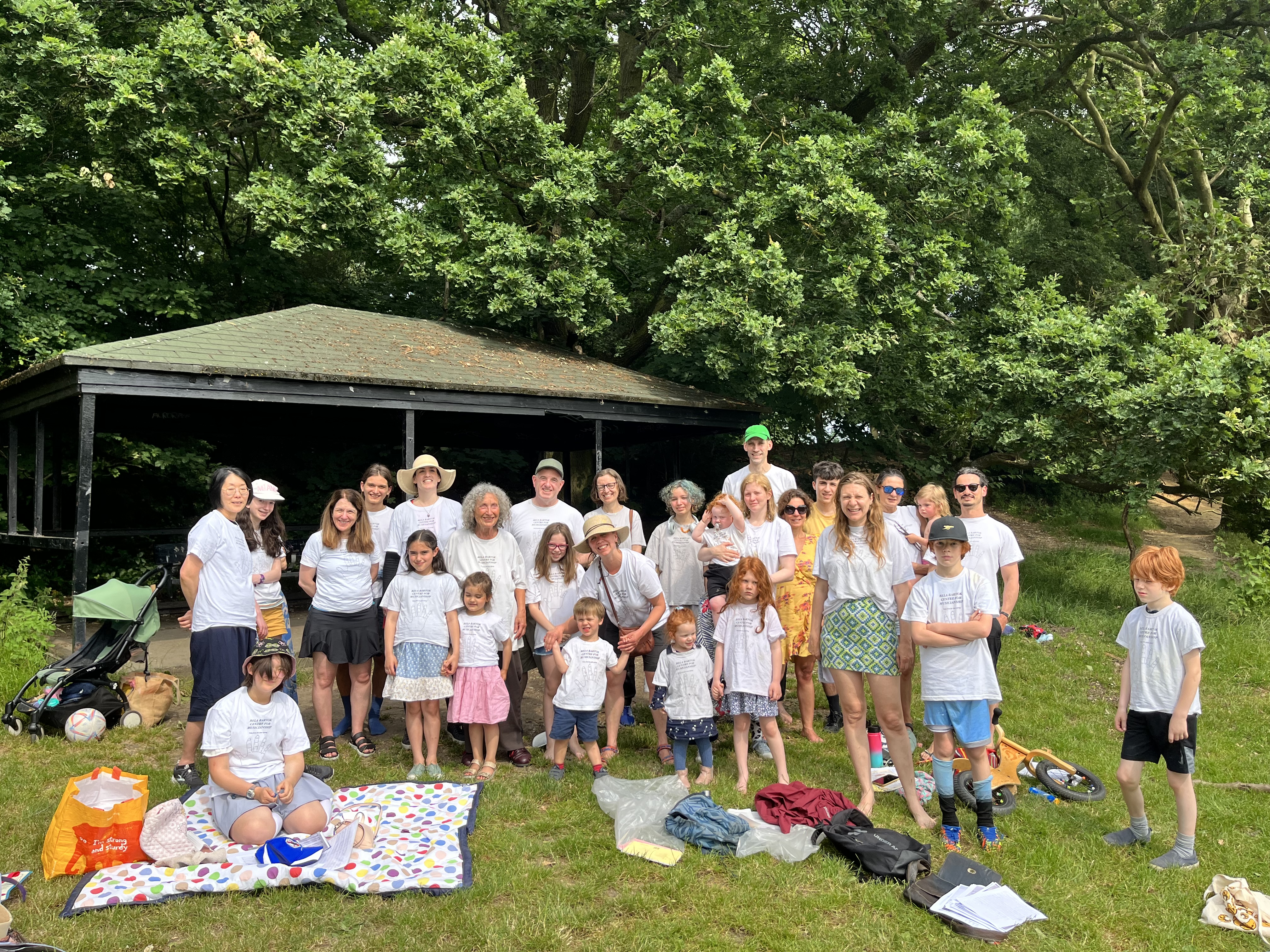
Here we are to celebrate music together on Hampstead Heath
| 17 June 2023 BBCM Workshop |
Back to Reviews of BBCM Concerts, Workshops and Courses |
Fourth BBCM workshop on Hampstead Heath
Text: Elena Fateeva, William Boyd Fisher and Agnes Kory
Pictures: James Rudd, Konstanze Rietsch and Hester Goodsell
Caption under pictures: Agnes Kory

Here we are to celebrate music together on Hampstead Heath
Our son Francis (almost three as I write this) joined BBCM in September last year just after his second birthday. A friend had taken some cello lessons with Agnes, and told us about the Kodaly system class she also teaches, and makes a requirement for all her instrument students. Truth be told, I was thinking of myself as much as Francis when we approached Agnes. To have that essential musical skill of being able to translate from score to sound, and the other way round, is something I have been trying to develop throughout my adult life (I sing in a choir and play by ear on my bayan, b-system accordion). For Francis, I wanted him to have this gift, to have a language for any musical endeavour he might want to embark on.
A short interview was arranged by Agnes, who emphasised that if we were expecting just another class alongside football and swimming on Saturdays then we’d better look elsewhere. This was a serious undertaking, led by someone who has dedicated her life to musical performance, scholarship, and education. And it felt personal. In the first class Agnes produced beautifully drawn cards for hand gestures signifying the notes. “Careful, please! These were my mother’s”, she warned. Agnes expects every student, no matter how young or out of sorts, to pay attention during the 20-minute class - 40 minutes above age 5 - and spends a considerable amount of time focusing the efforts of whoever feels disinclined to do so.
The classes are a mixture of memory exercises to learn musical intervals, rhythm exercises and songs that Agnes has carefully selected to cement the knowledge. Much attention is paid to phrasing since the ultimate goal is musicality. Incredibly by the end of the year Agnes introduces the idea of musical notation, with sticks and coins. Ingenious!
At the end of the year Agnes arranges a workshop for all her students, young and old, together with their family members and loyal ex-students.The workshop starts with the little ones leading the songs learnt throughout the year, with the other students joining in with polyphony.
While walking together from Hampstead Heath station to our annual workshop spot on the Heath, we make stops to sing first the Marching Song and then, at Hampstead Ponds, the Frogs’ Festival where the little ones are introduced to the experience of singing harmony in a larger group. Their bell-like “Craw! Craw!” provides accompaniment to the swirling harmony of the round sung by older students.
The workshop was also a chance to hear a variety of music that older students performed by reading the music that Agnes provided. In Bartók’s “Ne menj el”, a two-part choral composition, Agnes carefully explained the dynamics that lift the music off the page and give it the lilting quality of the song. A similarly careful approach was taken with one of Bach’s chorales to produce, in full polyphonic harmony, music which is solemn and pleading. Some of the pieces were new to all, current and past students. Led by Agnes, one saw how these compositions could be performed with a sense of understanding for their musical qualities, with young and old, past and present students, coming together to undertake a challenging musical project.
Members of the school could also contribute a piece from their independent studies. Accepting the invitation, Boyan performed a Brazilian piece beautifully on classical guitar. The afternoon was a great expose of every part of the school and Agnes’s work. Attending Agnes’s school has been a very rewarding musical journey for Francis and us parents too. We have learned some great tunes that we can sing together and new skills that are expanding our musical lives. We very much look forward to next year and continuing this journey.
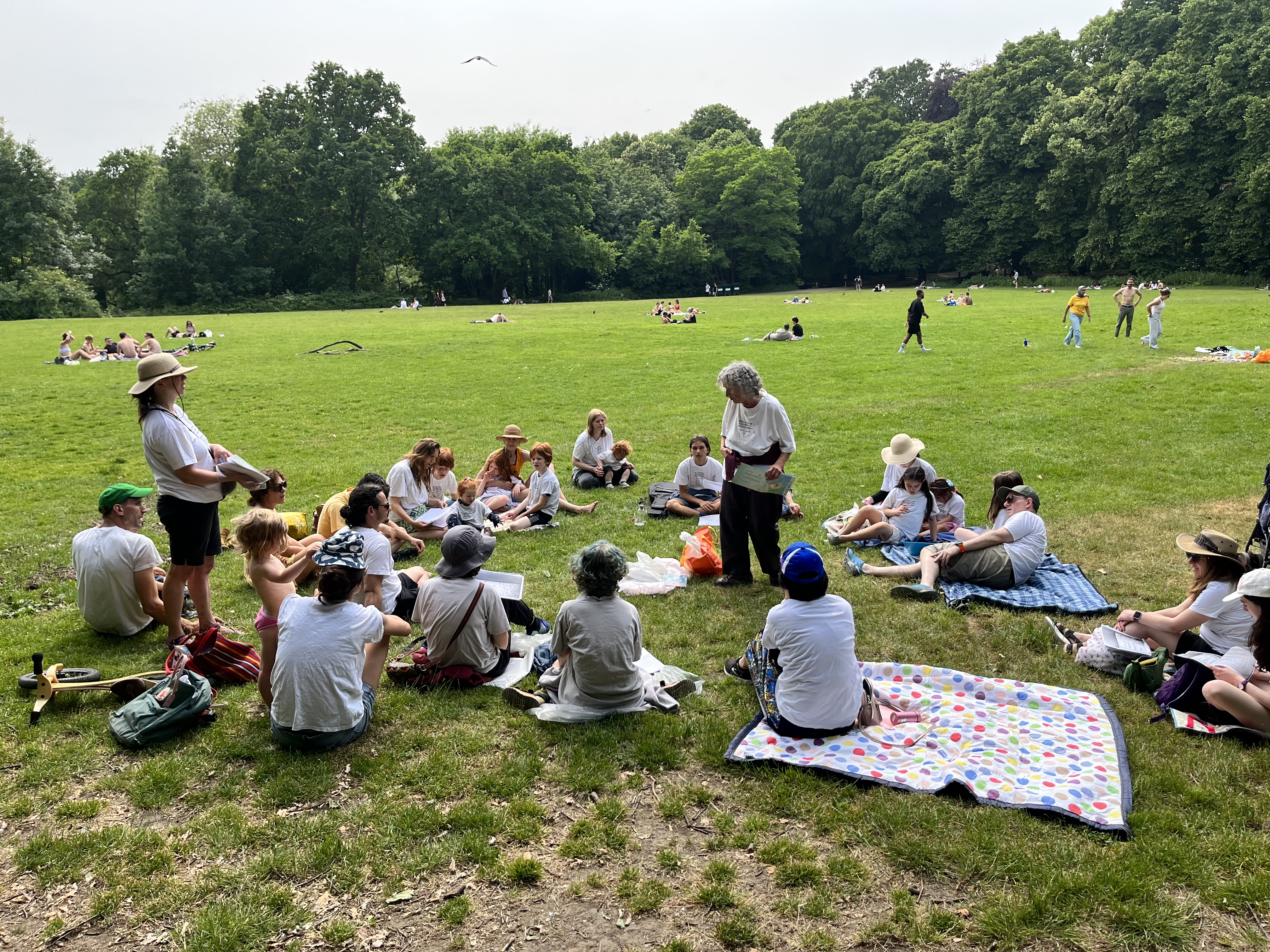
We may look and feel relaxed but we are fully focused on our music.
Thanks to all participants, especially to ex-BBCM student David Franklyn who represented the sole true bass voice for all our items, we tackled a wide-ranging repertoire from simple children’s songs to compositions by great masters.
Marching
Hungarian children song with only three notes of the tonic triad, sung in four-part round en route from the train station to our ‘venue’.
Frog Festival
German children song, with notes going up and down stepwise in the major scale, sung in three-part round at Hampstead Ponds on the way to our ‘venue’.
Pease pudding / Ram Sam Sam
The English nursery song, with the first four notes of the major scale moving step-wise, accompanied by the vigorous children’s dance song allegedly from Morocco.
Lavender's Blue
As a gesture towards King Charles’s coronation: ‘When you are King…I shall be Queen’, with six notes of the major scale, sung this time in a four-part round accompanied with percussion instruments by the tinies. (Benjamin Britten used this song, in full polyphony, in The Turn of the Screw.)
Candle Light
Hungarian children’s song and game, using six notes of the major scale.
Duckling/Lullaby
Hungarian children’s song, first six notes of the minor scale mostly step-wise, accompanied by a sophisticated upper part by Hungarian composer Lajos Bárdos.
Mosquito Song
Hungarian children’s song with the first five notes of the minor scale, sung in four-part round.
Beethoven: Ode to Joy
Sung in four-part harmony, tinies from hand signs.
BBCM song
Icelandic song about a bird, using notes of the major scale stepwise, with special BBCM text, four-part round.
Boyan Petrov played 'Sons de Carrilhoes' by Joao Pernambuco on his guitar.
It was an excellent performance, all from memory, impressing young and not so young present. Tiny Iris Rudd, fifteen months old when first a BBCM student but by June just two years old, was particularly interested.
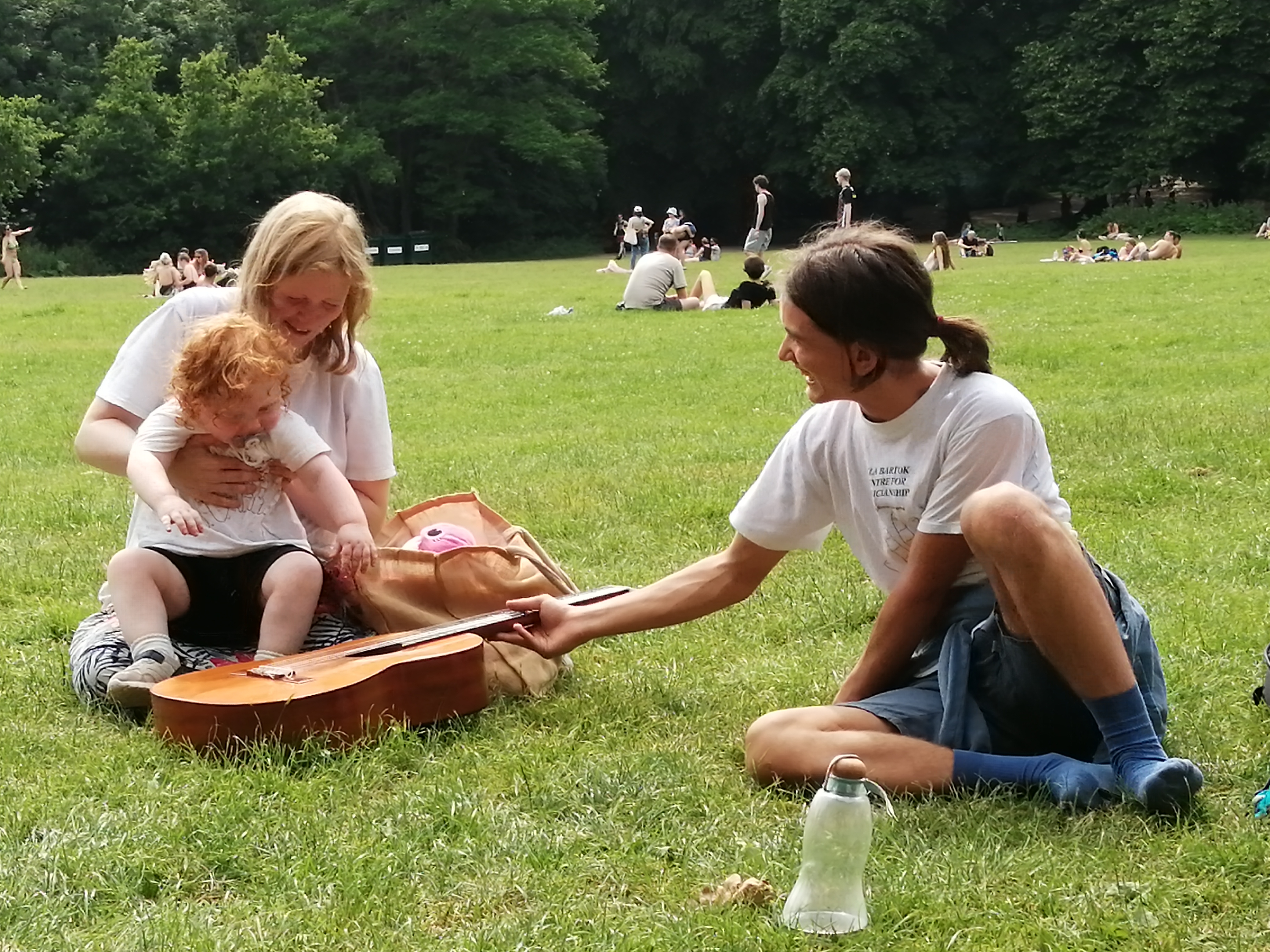
Warm-hearted Boyan offers his guitar to Iris.
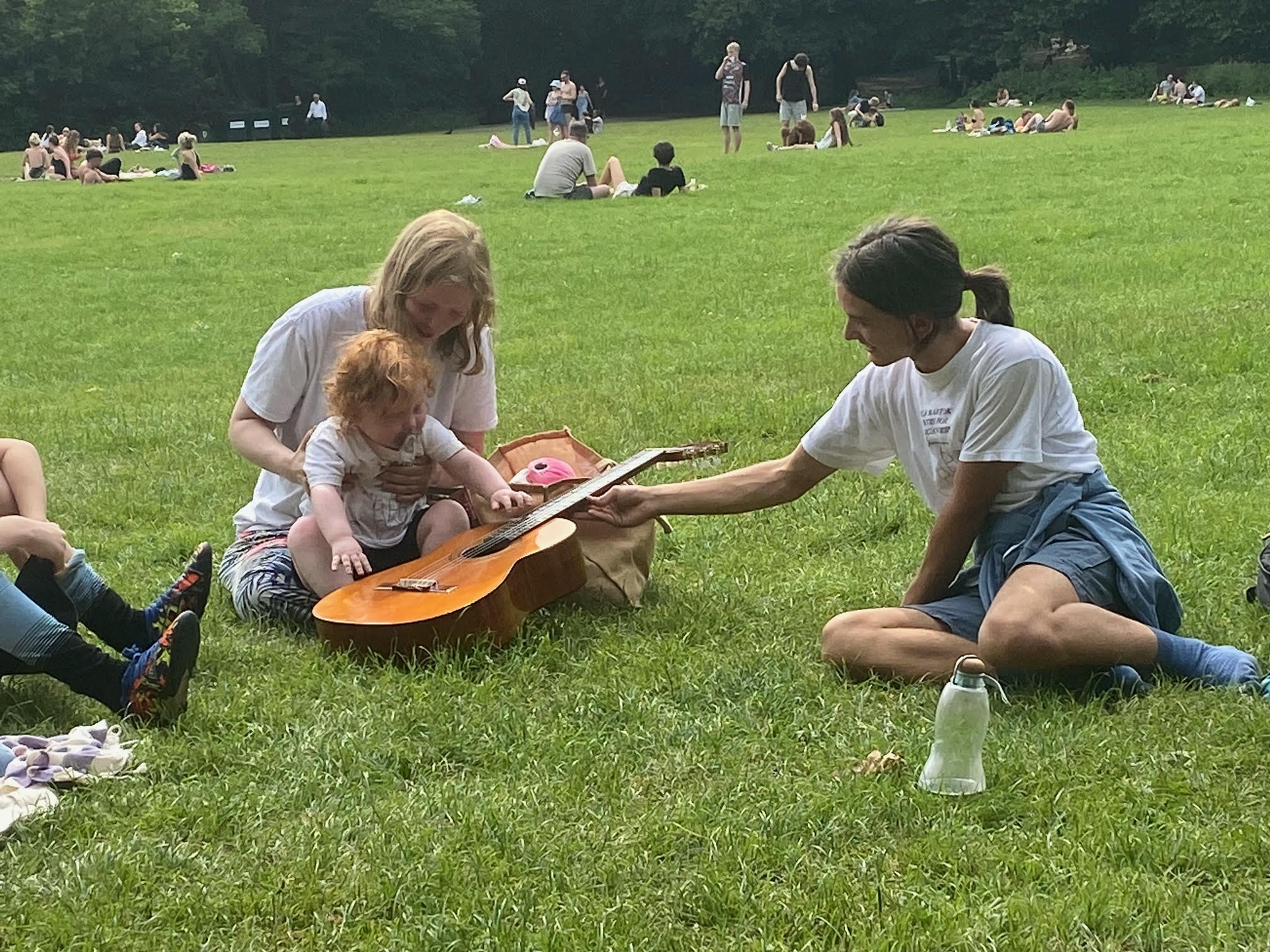
Iris is getting closer to the guitar.
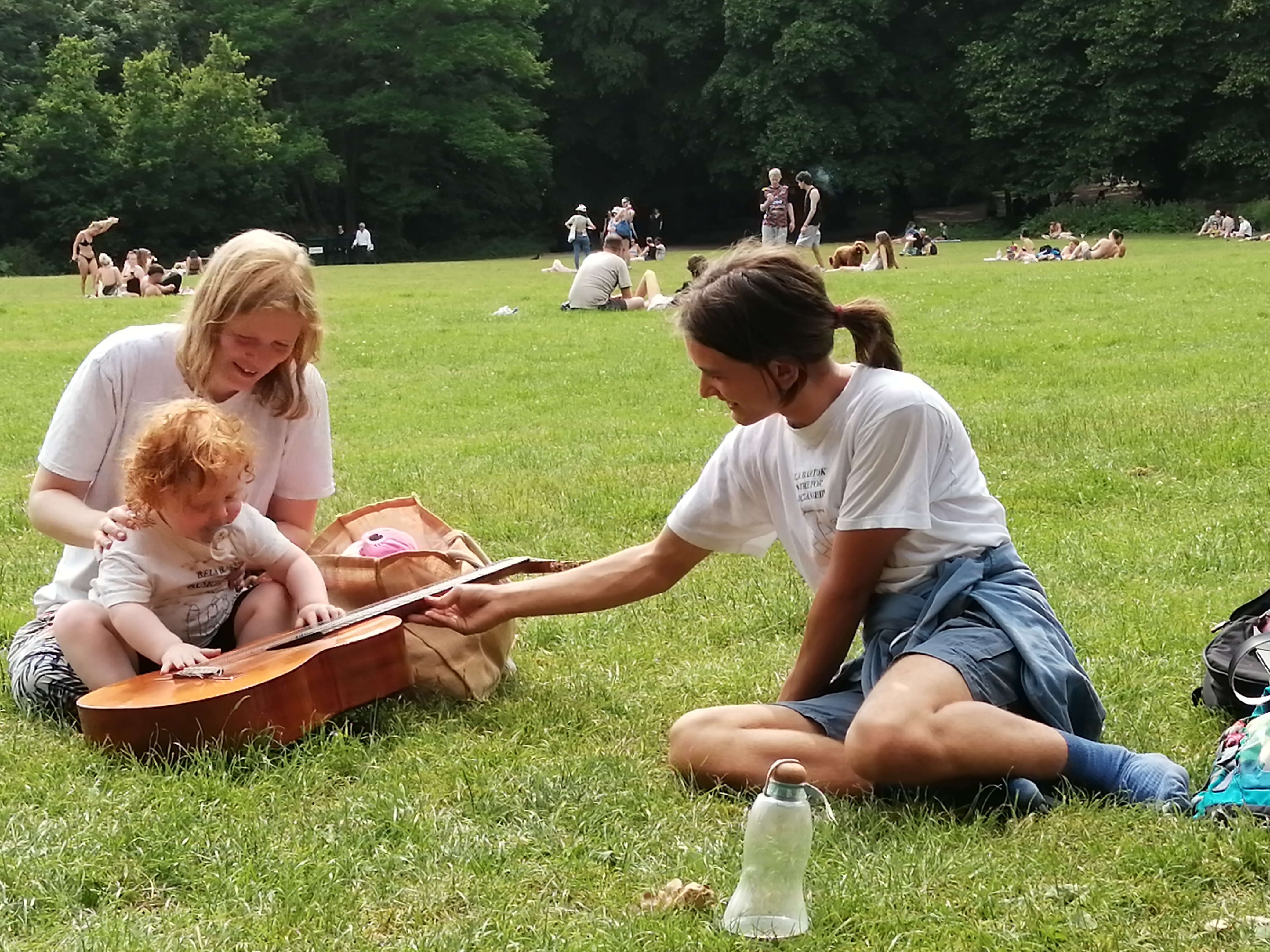
Bravely but gently Iris puts both hands on the guitar.
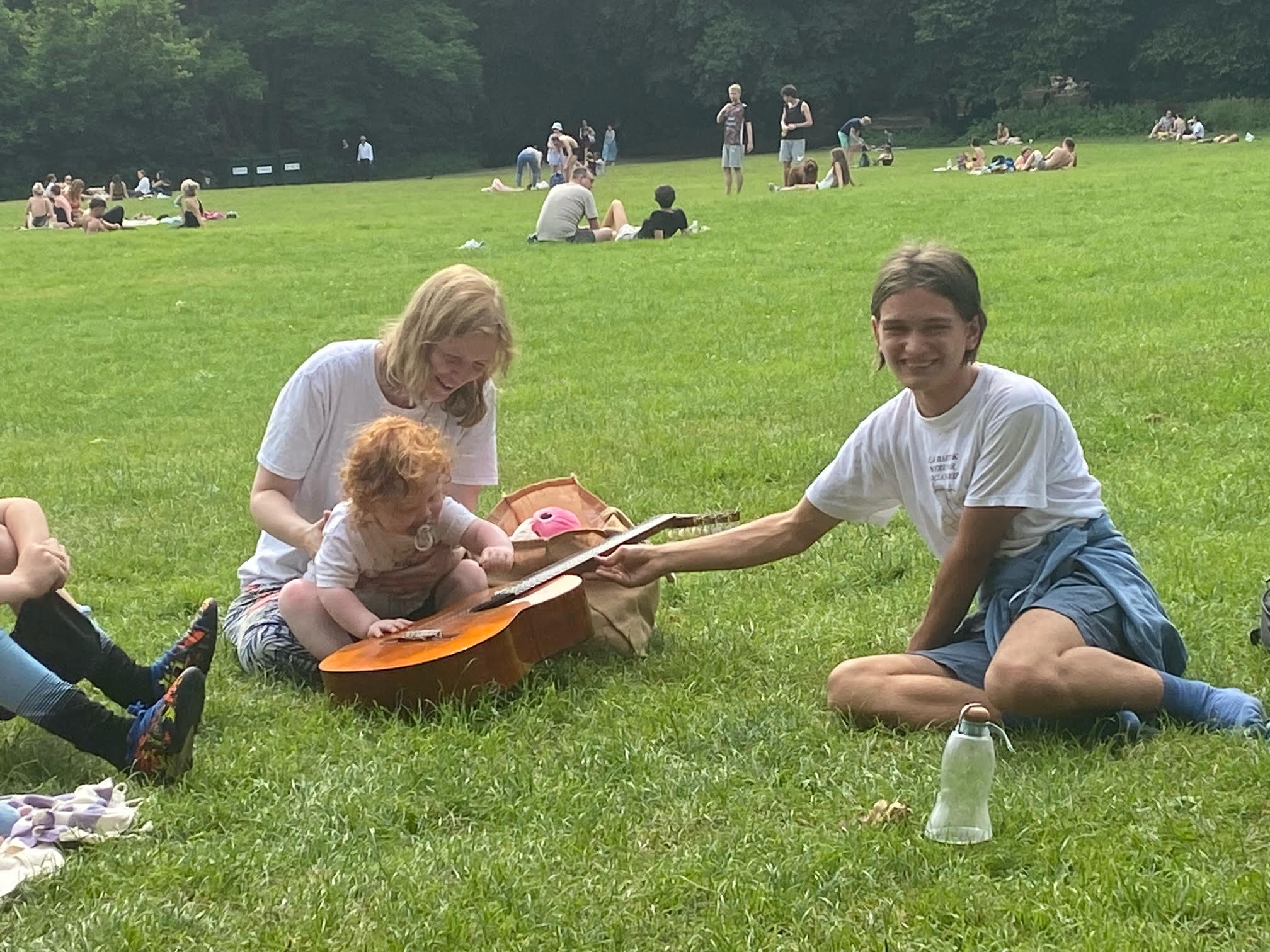
Iris tries different actions for her left and right hand, Boyan is delighted.
Kodály: Bicinia Hungarica 4, short two-part imitative singing exercise.
Bartók: Ne Menj El
Bartók: Játék, with text identical with the candle light game in part one
Bach Chorale from St Matthew’s Passion
Bach places this chorale immediately after the Evangelist announces Jesus’ death.
Kodály Bicinia Hungarica 60
Kodály’s short take on the Lord’s Prayer.
Haydn: Der Furchtsame
Beethoven: Glück zum Neuen Jahr
Bartók: Van Egy Gyűrüm Karika
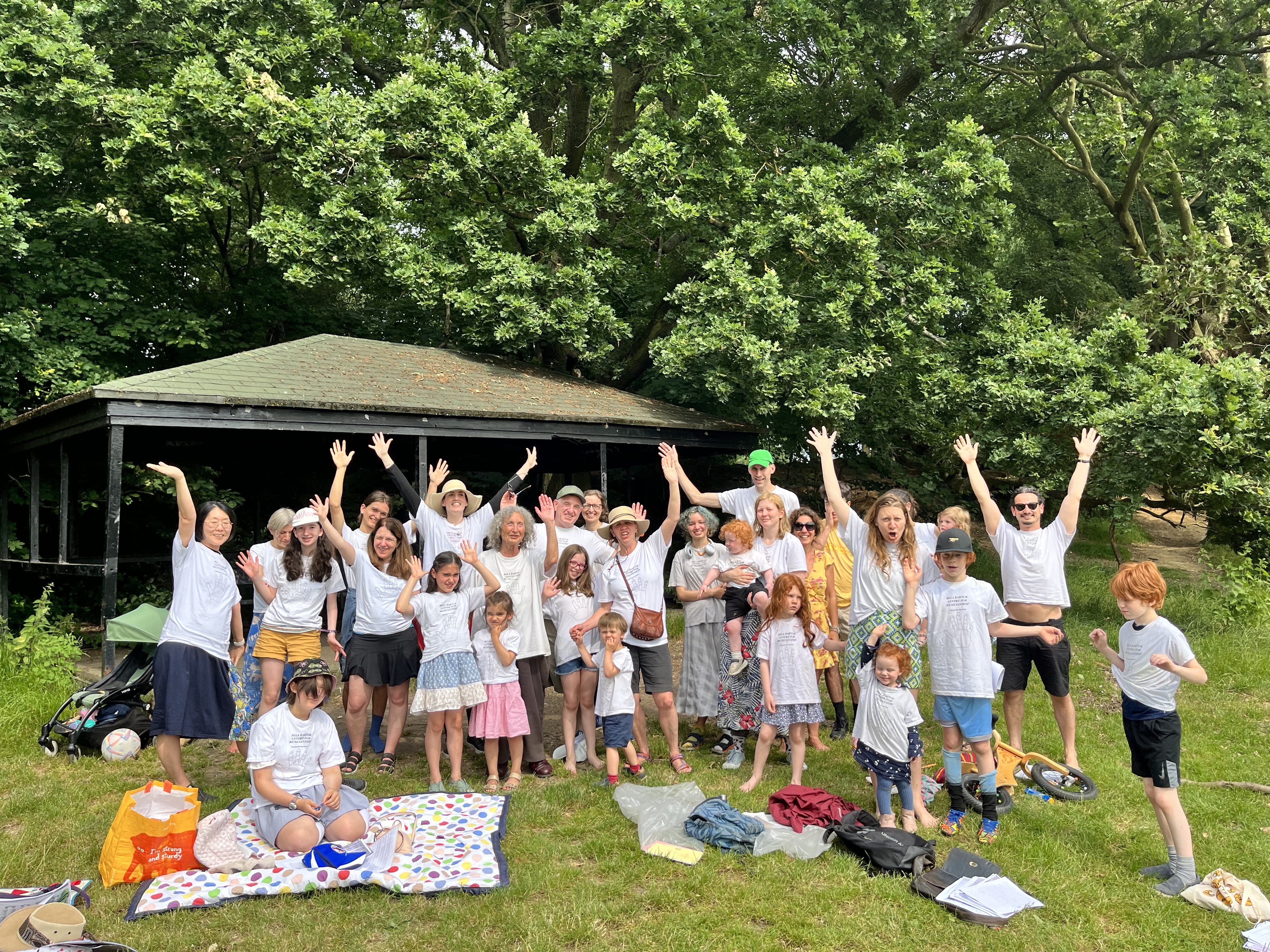
Greetings to all; Diesen Kuß der ganzen Welt!
| Top of page |